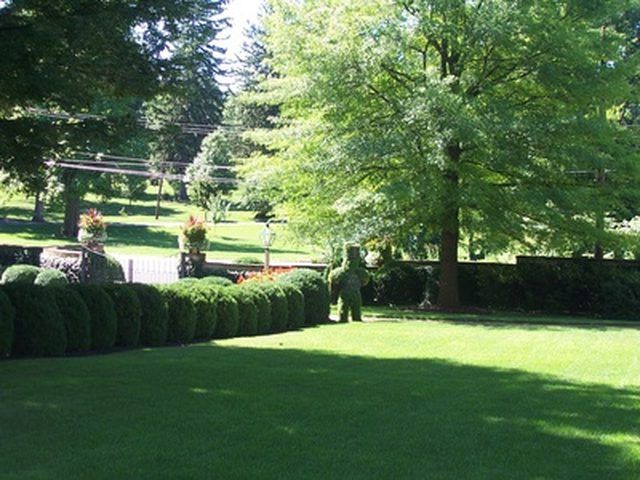Bulbs
Flower Basics
Flower Beds & Specialty Gardens
Flower Garden
Garden Furniture
Garden Gnomes
Garden Seeds
Garden Sheds
Garden Statues
Garden Tools & Supplies
Gardening Basics
Green & Organic
Groundcovers & Vines
Growing Annuals
Growing Basil
Growing Beans
Growing Berries
Growing Blueberries
Growing Cactus
Growing Corn
Growing Cotton
Growing Edibles
Growing Flowers
Growing Garlic
Growing Grapes
Growing Grass
Growing Herbs
Growing Jasmine
Growing Mint
Growing Mushrooms
Orchids
Growing Peanuts
Growing Perennials
Growing Plants
Growing Rosemary
Growing Roses
Growing Strawberries
Growing Sunflowers
Growing Thyme
Growing Tomatoes
Growing Tulips
Growing Vegetables
Herb Basics
Herb Garden
Indoor Growing
Landscaping Basics
Landscaping Patios
Landscaping Plants
Landscaping Shrubs
Landscaping Trees
Landscaping Walks & Pathways
Lawn Basics
Lawn Maintenance
Lawn Mowers
Lawn Ornaments
Lawn Planting
Lawn Tools
Outdoor Growing
Overall Landscape Planning
Pests, Weeds & Problems
Plant Basics
Rock Garden
Rose Garden
Shrubs
Soil
Specialty Gardens
Trees
Vegetable Garden
Yard Maintenance
How to Fix Hunter Sprinkler Heads
How to Fix Hunter Sprinkler Heads. Hunter Industries, Inc. is a common brand of irrigation equipment on the market today. For residential and small commercial installations they have three recommended sprinklers (more correctly termed "rotors"), the PGJ, PGP and I-20. They manufacture several larger rotors for civic grounds and athletic fields as...

Hunter Industries, Inc. is a common brand of irrigation equipment on the market today. For residential and small commercial installations they have three recommended sprinklers (more correctly termed "rotors"), the PGJ, PGP and I-20. They manufacture several larger rotors for civic grounds and athletic fields as well. The repair steps would apply generally to these larger rotors, but specific details may vary.
Things You'll Need
Dental pick
Toothbrush
Hunter rotor key
Hunter rotor collar
Tape measure
Troubleshooting
Determine the exact problem before you attempt any repair. Manually start the zone that includes the faulty rotor. Observe the other rotors included in the same zone. If they come on normally, the fault is with the rotor specifically, not the controller, wiring or water supply.
Examine the rotor closely while the zone is on. The repair will take a different course of action depending on the symptoms. If the rotor rises and sprays normally, but does not rotate, skip to "Replace Rotor." If the rotor rises and shoots an uncontrolled column of water, skip to "Install Nozzle." If some water bubbles up from the rotor, but it does not rise, or if no water is present at all, move to "Check Filter."
Turn the zone off and clean the turf and soil from around the rotor so that you have easy access to the rotor controls and the collar that locks the rotor mechanism into the housing.
Check Filter
Turn the collar ring that secures the rotor mechanism to the housing counterclockwise until the collar is loose.
Pull the rotor mechanism out of the housing.
Turn the rotor mechanism upside down. Remove the filter screen from the bottom of the rotor mechanism using a dental pick. If the screen is plugged with debris, clean it thoroughly with a toothbrush and running water.
Replace the filter. Look for gravel trapped between the spring and the rotor body. This will prevent the rotor from rising. Dislodge any foreign objects that are trapped between the spring and the rotor body.
Return the rotor mechanism into the housing, tighten the collar and retest the rotor.
Install Nozzle
Put the plastic end of the Hunter rotor key into the slot just to the left of the arrow on the top of the rotor cap. Turn it one quarter turn and pull up, lifting the rotor mechanism up against its spring as it would under water pressure.
Slip the Hunter rotor collar around the body of the rotor. Now, you can release your upward pressure and the collar will keep the rotor from retracting back into the housing. If your rotor was shooting an uncontrolled stream of water, the nozzle has blown out. Each Hunter rotor comes with a wide assortment of nozzles, sized differently to provide different spray arcs. If you don't know what size nozzle should be in the rotor, look at the neighboring rotors. Each nozzle has a number embossed into the plastic. Neighboring rotors should have closely matched nozzles.
Unscrew the Allen head set screw that holds the nozzle in place, using the metal end of the Hunter rotor key. Push the nozzle in so that it rests flush with the rotor body.
Screw the Allen head set screw down with the Hunter rotor key, securing the nozzle. Make sure that the end of the Allen screw does not go into the water stream, unless you know that you need to disperse the water pattern for a shorter arc.
Replace Rotor
If the rotor rises and sprays normally but does not rotate, or if you know water is being supplied to the rotor, but it otherwise fails to spray, you must replace the rotor. There are no serviceable parts other than the filter and nozzle in the rotor mechanism. It is generally not necessary to replace the housing, but you cannot purchase the rotor mechanism without the housing.
Turn the collar that secures the rotor mechanism to the housing counterclockwise and pull the rotor mechanism out of the housing.
Install the correct nozzle into the new rotor mechanism.
Slide the new rotor mechanism into the housing and turn the collar clockwise.
Start the zone and adjust the arc of the rotor to match the area it is supposed to cover. Adjust the arc using the Hunter rotor key. The plastic end of the key goes into the rotor cap where two arced arrows point toward a plus and minus. Turning the key toward the plus increases the travel of the rotor, while turning it toward the minus decreases the travel.